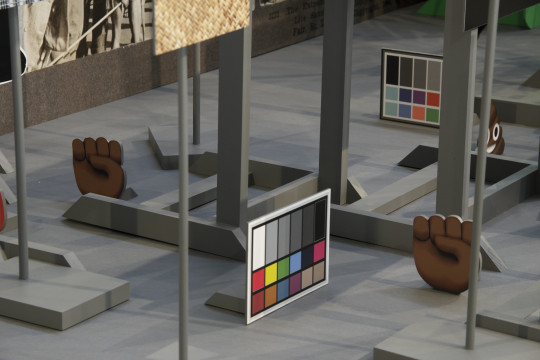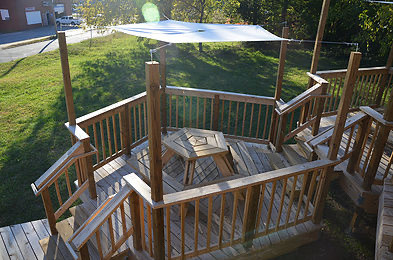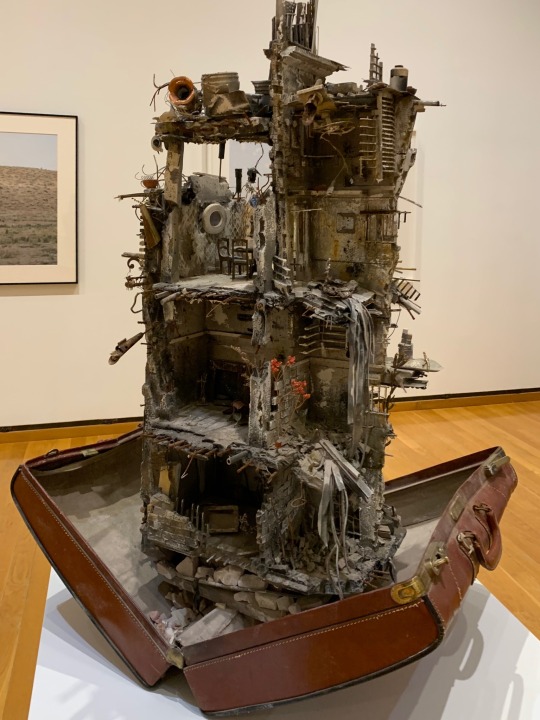Quote
It was made like a piece of automatic writing. I was filming Le Joli mai, completely immersed in the reality of Paris 1962, and the euphoric discovery of “direct cinema” (you will never make me say “cinéma vérité”) and on the crew’s day off, I photographed a story I didn’t completely understand. It was in the editing that the pieces of the puzzle came together, and it wasn’t me who designed the puzzle.
Chris Marker on La Jetee. (via bustakay)
66 notes
·
View notes
Text
Ho Rui An - Horizon Scanners
Ho Rui An’s lectures, essays, and films explore the nature and complexity surrounding image and power. He continuously questions the production of images, how they are circulated, and how they ultimately vanish as a result of globalism and governance. Rui An’s draws artistic influence from current events, film, politics, and social discourse. His art is also informed by his anthropological background and his relationship with technology. He will typically dedicate two years to researching and gathering materials prior to beginning a piece.
In his Horizon scanners lecture Ho Rui An discusses the notion of the horizon. It was once representative of an object of human mastery. He refers to the genre of western films and the image of the protagonist gazing at the horizon, looking to the promises it held, the goals laying wait in the line of sight. He proposes that the horizon has since evolved into a symbol of human limitation and the radical uncertainty faced by mankind. The conception of "Dash" and "Horizon Scanners" begins with the cultural phenomenon of dash cam footage. In his statement Ho Rui An writes that "While the dashcam was designed to bear witness to the accidents that happen to the vehicle it was fitted for, its proliferation in recent years has inadvertently yielded a contemporary index of the accident in the vast accumulation of crash footage on the Internet." This premise ultimately leads to the discussion of "horizon scanners," wherein technology is used to "scan the horizon" for potential threats.
The piece is a performance of sorts as it takes the form of a lecture. He first shows the audience a car accident that was captured on Dash Cam footage. He then begins his speech, which is accompanied by videos and images in the background. The lecture format aims to inform and educate. I would say that the primary piece of this art is the notion of Horizon scanners. In order to reach this point of knowledge, the audience must first be informed of several other details. This format also refers to the element of Narrative and Storytelling in this discussion. The lecture serves as a story of sorts with a beginning middle and end. The piece relates to his overall artistic practice as he uses lecture to communicate his message. It also relates to his larger body of work as he explores the relationship between humanity and technology.
0 notes
Photo


From The Art of Spirited Away artbook (2002)
19K notes
·
View notes
Text
La Jetée
French filmmaker Chris Marker’s La Jetée debuted in 1962. The short film comprises of a series of black and white still images. It chronicles the story of a man in post-apocalyptic world who finds himself traveling through time as a result of underground experiments.
There are several factors of the film that Marker utilizes to communicate with and convey meaning towards his audience. The still images stand alone as individual works of art. Each one is a carefully captured photograph with elements such as composition and lighting taken into account. The use of these photographs highlights the nuance and depth held in a moment of time. Each still contributes to the tapestry of a single human experience. The consistent use of still images makes it all the more prominent when, half way through the film, actual moving footage is shown of the woman sleeping. The ability to move and breath freely is something precious. It is a fleeting moment of peace and freedom that exists in a world of restraints.
Other aspects of the editing also contribute to the film’s communication with the audience. The rate at which images appear indicate passage of time and can convey a sense of urgency or tranquility. Often each image cuts abruptly to the next, but at certain moments Marker chooses to have one fade into the other. This creates a sense of motion without actually using video. The music and sounds that accompany the narration also play a significant role. Music functions to consolidate the images into a singular narrative that would otherwise play out like a slideshow.
The world woven by Marker allows its protagonist to be planted in singular moments of time. The viewers similarly find themselves placed in still images, frozen instances of a time and place alien to their own reality. The film transports its viewers into various points of a visual story, experiencing the film as if they are reliving a forgotten memory. It is in this way that La Jetée embraces and explores the very nature of film, as well as the power and potential of the still image as an indicator of time and space.
1 note
·
View note
Photo

I would like to focus on the word "dissociation" in the text as image project. I feel that the word adequately plays into the ideas being discussed in class surrounding consciousness, reality, illusion, and technology. I want to cement this seemingly abstract notion through visual means. This entails utilizing elements such as line weight and opacity. I also want to somehow convey the idea of multiple bodies or forms separating from one another. With these thoughts in mind my draft (seen in the included image) came to form. I like this starting point, but I want to complicate the image further and to create a sense of confusion. I also want to add some hand drawn illustrative elements.
0 notes
Video
Josh Tonsfeldt | Untitled
0 notes
Video
youtube
1 note
·
View note
Photo



Dodge and Burn (Digital Storage) 2017
Stephanie Syjuco
3 notes
·
View notes
Text
Stephanie Syjuco
The art of Stephanie Syjuco deals with issues of representation, appropriation, and identity. Her work intersects with digital spheres as she explores these ideas. Syjuco considers abstract notions and experiences through the manifestation of digital concepts as physical objects. This cementation of the abstract as tangible object is a crucial aspect of her artistic practice. She achieves this in her "Dodge and Burn (Digital Storage)" installation which comprises of 2-dimensional laser cutouts of imagery related to representation and identity, photographic color cards, and dresses made of chromakey back drop and a textile resembling the photoshop transparency layer. The use of chromakey and transparency layer is especially poignant as they are often meant to be interpreted as the absence of an image or object. Digital image vernacular becomes a means through which she might communicate the complexity of identity and citizenship.
2 notes
·
View notes
Text



Porch Project: Black Lunch Tables, Heather Hart
1 note
·
View note
Video
youtube
Heather Hart, "Southern Oracle: We Will Tear the Roof Off"
0 notes
Text
Heather Hart
Heather Hart is an Afro Latinx artist whose work deals with topics of race and gender. Her artistic practice is installation oriented and aims to engage the viewer with sociopolitical discourse through carefully crafted structures and spaces. The tactile nature of her work allows participants to interact with what would otherwise be abstract ideas.
Her work is informed by research, reading and genealogy. The genealogical practices specifically touch on issues of race as her work correlates with discussions surrounding the erasure of African American genealogical lines from historical records. The theme of erasure of minority groups is a focus in much of Hart’s work as she also discusses lack of visibility of minority artists.
The nature of her installations relates with the setting in which they are established, that is to say, the interpretations and discourse of a piece will vary depending on the location it is built in. One such installation was the Black Lunch Table, which allowed a space for black individuals to discuss issues of race. At these lunch tables those in attendance will take part in Wikipedia edit-a-thons, where they will edit and contribute to the Wikipedia pages of artists who are often underrepresented. The function of the edit-a-tons is particularly important when considered within the context of minority representation and white washing in western media and culture. In this way Hart’s art functions to preserve “genealogical line” of black and Latinx artist that would have other have otherwise been erased by a Eurocentric artistic cannon.
0 notes
Text


Baggage Series 4 Mohamad Hafez
0 notes



